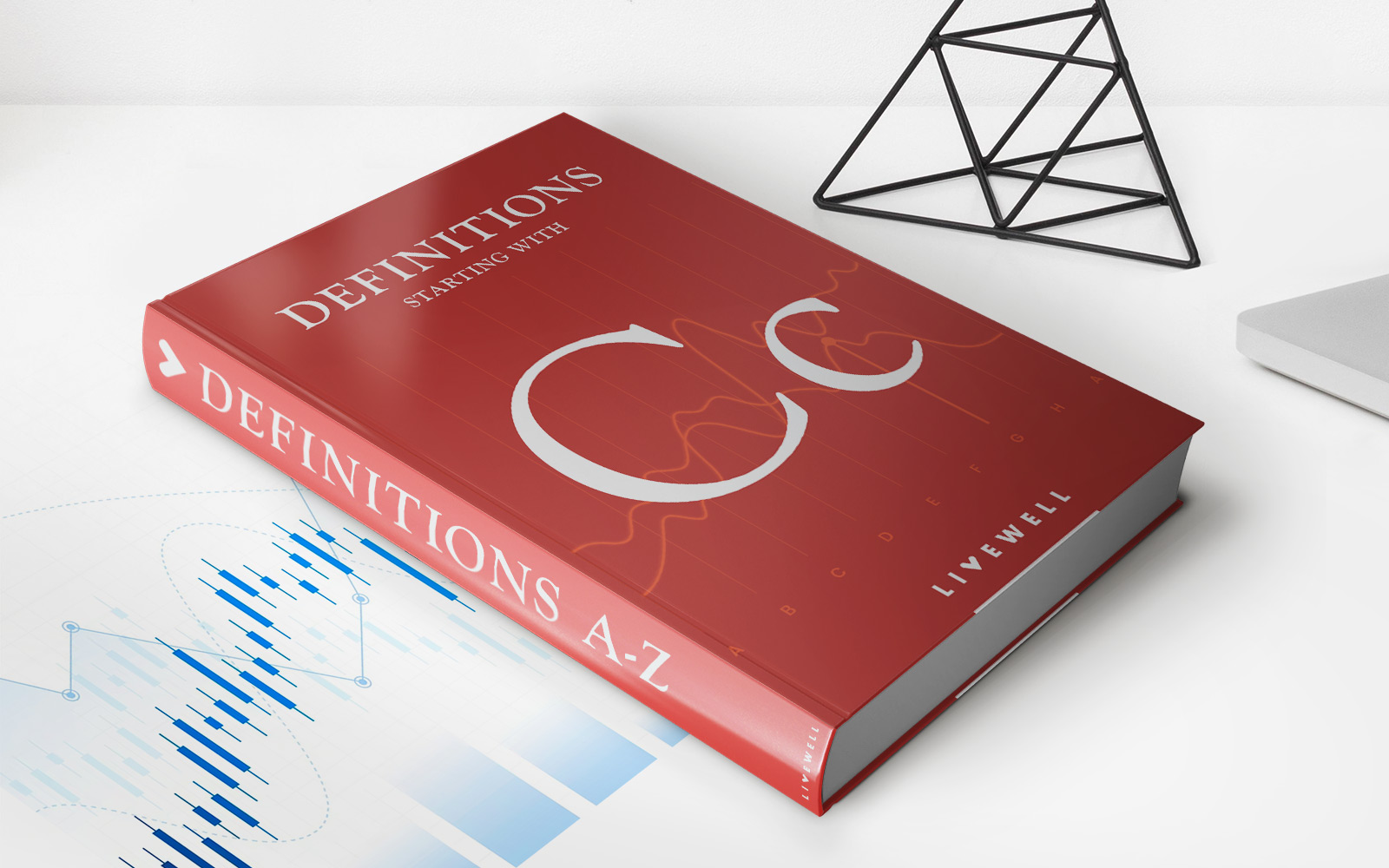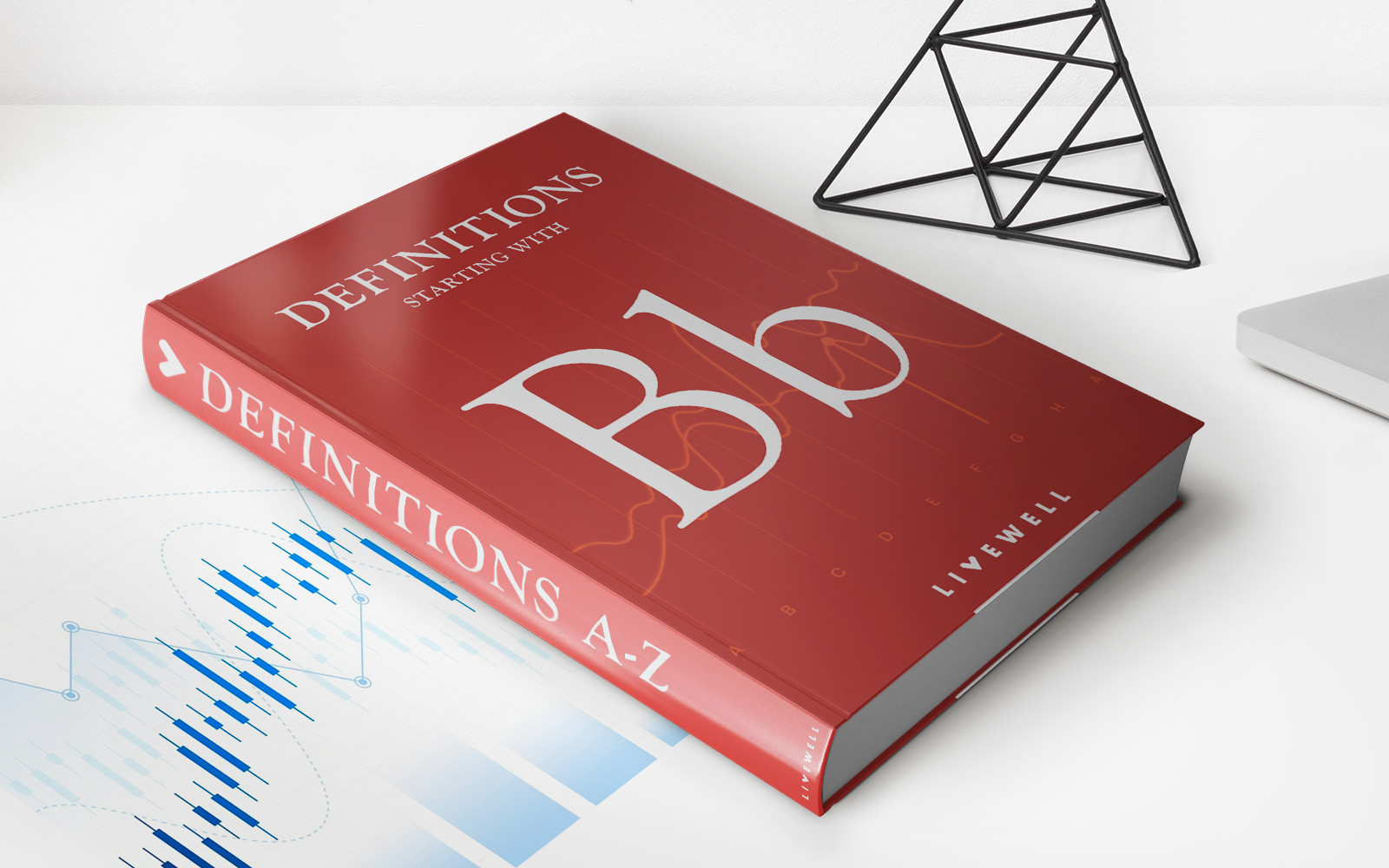Home>Finance>What Document Explains Your Rights And Responsibilities As A Federal Student Loan Borrower?


Finance
What Document Explains Your Rights And Responsibilities As A Federal Student Loan Borrower?
Published: November 3, 2023
Discover the important document that outlines your rights and responsibilities as a federal student loan borrower. Empower yourself with knowledge about your finance options.
(Many of the links in this article redirect to a specific reviewed product. Your purchase of these products through affiliate links helps to generate commission for LiveWell, at no extra cost. Learn more)
Table of Contents
- Introduction
- Federal Student Loan Borrowing
- Rights of Federal Student Loan Borrowers
- Responsibilities of Federal Student Loan Borrowers
- The Master Promissory Note (MPN)
- Exit Counseling
- Loan Repayment Plans
- Loan Forgiveness Programs
- Loan Discharge and Cancellation Options
- Loan Consolidation
- Borrower Defense to Repayment
- Conclusion
Introduction
When embarking on the journey of pursuing higher education, many students rely on federal student loans to help fund their studies. While obtaining a student loan can be a crucial step in achieving educational goals, it is equally important for borrowers to understand their rights and responsibilities throughout the loan process.
Whether you are considering taking out a federal student loan or are already a borrower, it is essential to have a clear understanding of the various documents and resources available to you. One such document that plays a critical role in outlining your rights and responsibilities as a federal student loan borrower is the Master Promissory Note (MPN).
In this article, we will explore the key aspects of federal student loan borrowing and discuss the important document that explains your rights and responsibilities – the MPN. We will also delve into additional resources and programs available to borrowers, including loan repayment plans, forgiveness programs, discharge and cancellation options, loan consolidation, and borrower defense to repayment.
Federal Student Loan Borrowing
Obtaining a federal student loan is the primary method by which many students finance their higher education. These loans are provided by the U.S. Department of Education and offer several benefits, including lower interest rates and more flexible repayment options compared to private loans.
Before borrowing a federal student loan, it is important to complete the Free Application for Federal Student Aid (FAFSA). This application is used to determine your eligibility for federal student aid, including loans, grants, and work-study programs. The information provided on the FAFSA helps determine the type and amount of financial aid you may qualify for.
Once your eligibility is determined, you have the option to accept or decline the student loan offer. If you decide to proceed with the loan, you will be required to sign the Master Promissory Note (MPN), which serves as a legally binding agreement between you and the federal government.
The MPN outlines your rights and responsibilities as a federal student loan borrower. It provides important information about the terms and conditions of the loan, including the interest rate, repayment options, and any applicable fees. It is crucial to carefully review and understand the terms outlined in the MPN before signing it.
By signing the MPN, you agree to repay the loan according to the terms and conditions specified. It is essential to remember that federal student loans must be repaid, regardless of whether you complete your education, find employment, or are satisfied with your educational experience.
As a borrower, it is important to stay informed about your loan status and to communicate any changes in your circumstances to your loan servicer. This includes changes in enrollment status, graduation, or changes in personal contact information. Keeping your loan servicer updated ensures that you receive important notifications and can successfully manage your loan repayment.
It is crucial to understand that defaulting on a federal student loan can have serious consequences, including damage to your credit score, wage garnishment, and the potential loss of eligibility for future federal financial aid. Therefore, it is essential to make timely and regular payments or explore alternative repayment options if you are facing financial hardship.
Rights of Federal Student Loan Borrowers
As a federal student loan borrower, you have certain rights that protect you throughout the loan process. Understanding these rights can empower you to make informed decisions and advocate for yourself as you navigate the world of student loan repayment. Here are some key rights that you should be aware of:
- Right to Receive Disclosure: You have the right to receive comprehensive information about your federal student loan. This includes details about the interest rate, fees, repayment options, and any deferment or forbearance possibilities. It is important to review and understand this information to make informed choices about your loan.
- Right to Choose a Repayment Plan: Federal student loan borrowers have the right to choose from a variety of repayment plans. These plans include options such as the standard repayment plan, income-driven repayment plans, and extended repayment plans. Each plan has its own terms and benefits, allowing you to select the one that best fits your financial situation.
- Right to Deferment and Forbearance: If you experience financial hardship, you have the right to request a deferment or forbearance. Deferment allows you to temporarily postpone loan payments, while forbearance allows you to temporarily reduce or delay payments. These options provide relief during challenging times but should be used judiciously, as interest may continue to accrue.
- Right to Loan Consolidation: Federal student loan borrowers have the right to consolidate their loans into a Direct Consolidation Loan. This can simplify repayment by combining multiple loans into one, potentially lowering your monthly payments and extending the repayment term. However, it’s important to weigh the pros and cons of consolidation before making a decision.
- Right to Loan Forgiveness Programs: Certain borrowers may be eligible for loan forgiveness programs, such as Public Service Loan Forgiveness (PSLF) or Teacher Loan Forgiveness. These programs forgive a portion or all of your remaining loan balance after fulfilling specific criteria, such as working in a qualifying public service job or teaching in a low-income school.
It is important to note that your rights as a federal student loan borrower can vary depending on the type of loan you have, so it is crucial to understand the specific terms and benefits associated with your loan.
Responsibilities of Federal Student Loan Borrowers
While federal student loan borrowers have rights, they also have important responsibilities that must be upheld throughout the loan process. By understanding and fulfilling these responsibilities, you can ensure a smooth repayment journey and maintain a positive financial standing. Here are some key responsibilities of federal student loan borrowers:
- Responsibility to Repay the Loan: The primary responsibility of a borrower is to repay the loan according to the terms and conditions specified in the Master Promissory Note (MPN). This includes making timely and regular loan payments in the amount specified by your loan servicer. Failing to repay your loan can result in serious consequences, such as delinquency, default, and damage to your credit score.
- Responsibility to Notify Loan Servicer: It is your responsibility to keep your loan servicer informed about any changes in your circumstances, such as changes in enrollment status or graduation. This ensures that your loan servicer has accurate and up-to-date information to communicate with you effectively and provide you with relevant resources and assistance.
- Responsibility to Notify Address Changes: If you change your address, phone number, or email address, it is your responsibility to notify your loan servicer promptly. This ensures that you receive important notifications, such as billing statements, repayment reminders, and other loan-related correspondence.
- Responsibility to Complete Exit Counseling: If you have received a federal student loan and are graduating, withdrawing, or dropping below half-time enrollment, you are required to complete exit counseling. Exit counseling provides valuable information about your rights and responsibilities as a borrower, loan repayment options, and resources available to assist with successful loan repayment.
- Responsibility to Budget and Manage Finances: As a borrower, it is essential to budget your finances effectively and manage your expenses wisely. This includes making your loan payments a priority and ensuring that you have enough funds to cover other essential expenses. Take advantage of tools and resources, such as loan repayment calculators, to plan your budget and see how different repayment options may impact your monthly payments.
By fulfilling these responsibilities, you demonstrate your commitment to managing your loan responsibly and reduce the likelihood of facing financial difficulties during repayment. Remember that being proactive and staying informed is crucial to successfully fulfilling your responsibilities as a federal student loan borrower.
The Master Promissory Note (MPN)
The Master Promissory Note (MPN) is a legally binding document that plays a crucial role in the federal student loan process. It serves as an agreement between you, the borrower, and the U.S. Department of Education, outlining the terms and conditions of the loan.
When you accept a federal student loan, you are required to sign the MPN. By doing so, you acknowledge your obligation to repay the loan according to the terms specified. It is essential to carefully review the MPN before signing to ensure you understand the details and obligations associated with your loan.
The MPN contains important information, including:
- Borrower Information: The MPN will include your personal information, such as your name, social security number, and contact details. It is crucial to ensure that this information is accurate and up-to-date.
- Loan Terms and Conditions: The MPN outlines the specific terms and conditions of your loan, including the interest rate, repayment plan options, fees, and any deferment or forbearance possibilities. Understanding these terms will help you make informed decisions throughout your repayment journey.
- Promissory Note Terms: The MPN will include the promises you make as a borrower, such as your commitment to repay the loan, understanding the consequences of defaulting on the loan, and providing accurate information to your loan servicer.
- Repayment Obligations: The MPN details your repayment obligations, including the timeframe for repayment, the frequency of payments, and the consequences of late or missed payments. It is essential to understand these obligations and plan accordingly to avoid defaulting on your loan.
- Loan Servicer Information: The MPN will provide contact information for your loan servicer, who will manage your loan and assist you with any questions or concerns you may have throughout the repayment process.
It is important to keep a copy of your signed MPN for your records and to refer to it whenever you have questions regarding your loan. Additionally, if you need to borrow additional loans in the future, you may not be required to sign a new MPN. Instead, your existing MPN may continue to be used as long as you remain eligible for federal student aid.
By signing the MPN, you are entering into a legal agreement and accepting the responsibility of repaying your federal student loan. It is crucial to understand the terms and conditions outlined in the MPN and to fulfill your obligations as a borrower to maintain a positive loan repayment experience.
Exit Counseling
Exit counseling is a mandatory requirement for federal student loan borrowers who are graduating, withdrawing, or dropping below half-time enrollment. The purpose of exit counseling is to provide borrowers with important information about their rights and responsibilities regarding loan repayment, as well as to offer guidance on managing their student loan debt after leaving school.
Exit counseling typically includes the following key components:
- Loan Repayment Options: During exit counseling, borrowers are informed about the various repayment options available to them. This includes information about standard repayment, income-driven repayment plans, and extended repayment options. Understanding these options can help borrowers choose the most suitable repayment plan based on their financial circumstances.
- Budgeting and Financial Management: Exit counseling often covers topics related to budgeting and managing personal finances. Borrowers are provided with guidance on creating a budget, managing expenses, and making informed financial decisions. These skills are essential for successfully repaying student loans and maintaining financial stability.
- Loan Servicer Information: Exit counseling provides borrowers with contact information for their loan servicer. Having this information on hand allows borrowers to stay in communication with their loan servicer, providing updates on their enrollment status, contact information, and addressing any questions or concerns about their repayment.
- Repayment Expectations and Consequences: Exit counseling helps borrowers understand the consequences of late or missed payments, defaulting on their loans, and the impact it can have on their credit score and financial future. This information serves as a reminder of the importance of responsible loan repayment.
- Loan Forgiveness and Discharge Options: Exit counseling also informs borrowers about potential loan forgiveness and discharge options. Depending on the borrower’s circumstances, they may be eligible for loan forgiveness through programs such as Public Service Loan Forgiveness (PSLF) or discharge options such as Total and Permanent Disability Discharge (TPD).
Exit counseling can be completed online, in-person, or through interactive videos or modules. It is important to approach the session with attentiveness and actively seek clarification on any questions or concerns regarding loan repayment.
Completing exit counseling is not only a requirement but also a valuable opportunity to gain valuable knowledge about loan repayment and financial management. By understanding your responsibilities as a borrower and exploring available repayment options, you can set yourself up for success as you enter the repayment phase of your federal student loans.
Loan Repayment Plans
When it comes to repaying your federal student loans, there are several repayment plans available to accommodate various financial situations and income levels. Understanding these repayment plans can help you choose the option that best suits your circumstances. Here are some common loan repayment plans:
- Standard Repayment Plan: The standard repayment plan is the most common and straightforward option. It involves making fixed monthly payments over a 10-year period. This plan allows you to pay off your loan in the shortest amount of time and typically results in the lowest overall interest paid. However, monthly payments may be higher compared to other plans.
- Graduated Repayment Plan: The graduated repayment plan starts with lower monthly payments that gradually increase every two years over a period of 10 years. This plan is ideal for borrowers who expect their income to increase over time. While the initial payments may be more manageable, keep in mind that the total interest paid over the life of the loan may be higher than with the standard plan.
- Income-Driven Repayment Plans: Income-driven repayment (IDR) plans are designed to make loan repayment more affordable based on your income and family size. There are several IDR plans available, including Income-Based Repayment (IBR), Pay As You Earn (PAYE), Revised Pay As You Earn (REPAYE), and Income-Contingent Repayment (ICR). These plans typically cap your monthly loan payments at a percentage of your discretionary income, providing flexibility and potentially leading to loan forgiveness after a certain period of consistent repayment.
- Extended Repayment Plan: The extended repayment plan allows borrowers to extend their repayment term to up to 25 years. Monthly payments can be fixed or graduated, depending on the borrower’s preference. By extending the repayment period, borrowers can lower their monthly payments. However, it’s important to note that longer repayment terms typically result in paying more interest over time.
- Consolidation Loan: Loan consolidation is not a repayment plan itself but a method to simplify loan repayment. With a direct consolidation loan, borrowers can merge multiple federal student loans into one single loan. This can make managing loan payments more convenient as you’ll only have one payment to make each month. Consolidation can also extend your repayment term, resulting in lower monthly payments. However, it’s important to carefully consider the pros and cons of consolidation before making a decision.
When exploring repayment plans, it’s important to assess your financial situation, future income potential, and long-term goals. You can use online loan repayment calculators or consult with your loan servicer to compare the monthly payment amounts and the total amount paid over the life of the loan under different repayment plans.
Remember that you have the flexibility to change your repayment plan at any time. If your financial circumstances change, such as a decrease in income or unexpected expenses, you can explore alternative options to ensure your loan repayment remains manageable.
By understanding your repayment plan options and choosing the one that aligns with your financial goals, you can successfully navigate the path to becoming debt-free and achieve financial stability.
Loan Forgiveness Programs
Loan forgiveness programs can provide significant relief for federal student loan borrowers by eliminating a portion or all of their remaining loan balance. These programs are designed to assist borrowers who work in certain fields or meet specific criteria. Understanding the available loan forgiveness programs can help you explore potential opportunities to reduce or eliminate your student loan debt. Here are some common loan forgiveness programs:
- Public Service Loan Forgiveness (PSLF): The Public Service Loan Forgiveness program is available to borrowers who work full-time for a qualifying employer, such as a government organization or a non-profit organization. After making 120 qualifying payments under an eligible repayment plan, the remaining loan balance may be forgiven. It is important to fulfill all the requirements and submit the necessary paperwork to be eligible for PSLF.
- Teacher Loan Forgiveness: The Teacher Loan Forgiveness program is designed to provide loan forgiveness for teachers who work in low-income schools or educational service agencies. Eligible teachers can receive forgiveness of up to $17,500 on their Direct Subsidized and Unsubsidized Loans or Subsidized and Unsubsidized Federal Stafford Loans after teaching for five consecutive years.
- Income-Driven Repayment (IDR) Forgiveness: Under income-driven repayment plans such as Income-Based Repayment (IBR), Pay As You Earn (PAYE), Revised Pay As You Earn (REPAYE), or Income-Contingent Repayment (ICR), borrowers may be eligible for loan forgiveness after making qualifying payments for a specific period, typically 20 to 25 years. The forgiven amount under an IDR plan is considered taxable income.
- Public Service Loan Forgiveness for Nurses and Medical Professionals: Some loan forgiveness programs specifically target healthcare professionals, including nurses, doctors, and other medical professionals. These programs offer loan forgiveness incentives to encourage individuals to work in underserved areas or in high-need specialties where there is a shortage of healthcare professionals.
- Other Loan Forgiveness Programs: Various other loan forgiveness initiatives exist, such as forgiveness programs for military service members, borrowers in certain states, or borrowers who have experienced total and permanent disability. Each program has its own eligibility requirements and criteria, so it’s crucial to research and understand the specific conditions of these programs.
It’s important to note that loan forgiveness programs usually have strict criteria and requirements that must be met. Meeting these criteria may involve specific employment duration, qualifying payments, or other conditions. Therefore, it is essential to thoroughly research and understand the specific requirements of each program to determine if you are eligible and how to apply.
Keep in mind that loan forgiveness programs may change due to legislative updates or policy changes. It is recommended to periodically review the latest information and updates from the Department of Education or consult with a student loan servicer to stay informed about the available options for loan forgiveness.
Loan forgiveness programs can provide substantial relief for borrowers burdened by student loan debt. By exploring and utilizing these programs, you may be able to significantly reduce or eliminate your student loan obligations and achieve financial freedom.
Loan Discharge and Cancellation Options
Loan discharge and cancellation options are potential avenues for federal student loan borrowers to have their loans forgiven or canceled under specific circumstances. While loan forgiveness programs generally require a certain number of qualifying payments or employment in specific fields, loan discharge and cancellation options address unique situations that may make borrowers eligible for relief from their student loan debt. Here are some common discharge and cancellation options:
- Total and Permanent Disability Discharge (TPD): Borrowers who are totally and permanently disabled, either due to physical or mental impairment, may qualify for a TPD discharge. This discharge relieves borrowers from the obligation of repaying their federal student loans. The application process for TPD discharge typically involves submitting medical documentation and meeting other requirements determined by the U.S. Department of Education.
- Closed School Discharge: If your school closed while you were enrolled or shortly after you withdrew, you may be eligible for a closed school discharge. This discharge applies to borrowers who were unable to complete their program of study due to the closure. The process for a closed school discharge involves submitting an application along with supporting documentation to demonstrate your eligibility.
- Borrower Defense to Repayment: The Borrower Defense to Repayment program provides loan discharge for borrowers who believe they were defrauded by their school or misled in some way. Under this program, borrowers may be eligible for loan forgiveness if they can demonstrate that their school engaged in fraudulent or deceptive practices. The application process requires submitting a claim and supporting evidence to the U.S. Department of Education for review and evaluation.
- Death Discharge: In the unfortunate event of a borrower’s death, their federal student loans can be discharged. Survivors must typically provide documentation, such as a death certificate, to the loan servicer or the U.S. Department of Education to initiate the discharge process.
- Discharge in Bankruptcy: While discharging student loans through bankruptcy can be challenging, it is not impossible. Borrowers who are facing significant financial hardship and can prove undue hardship may be able to discharge their federal student loans through a bankruptcy proceeding. However, discharging student loans in bankruptcy requires meeting strict legal criteria and can be a complex process.
Each loan discharge and cancellation option has specific eligibility criteria and requirements that must be met. It is important to thoroughly review the qualifications and gather the necessary documentation to support your request for discharge or cancellation. Consulting with a student loan servicer or seeking legal advice may be helpful in navigating the application processes and understanding the viability of these options for your specific circumstances.
Keep in mind that loan discharge and cancellation options are typically not automatic and require proactive action on the part of borrowers to pursue relief. Understanding these options and taking appropriate steps when eligible can provide significant relief from the burden of student loan debt.
Loan Consolidation
Loan consolidation is a process that allows federal student loan borrowers to combine multiple loans into a single loan with one monthly payment. Consolidation simplifies loan management by streamlining multiple loans into a unified repayment plan. Here are some key aspects of loan consolidation:
Benefits of Loan Consolidation:
- Single Monthly Payment: Consolidation combines all eligible loans into one, resulting in a single monthly payment. This can make loan repayment more convenient and easier to manage, especially if you have multiple loans with varying due dates.
- Potential for Lower Monthly Payments: Consolidation may extend the repayment term, which can result in lower monthly payments. This can provide temporary relief if you are struggling to meet your current loan payment obligations.
- Fixed Interest Rate: When you consolidate your loans, the interest rate is fixed for the life of the new consolidated loan. This can provide stability and protect you from potential interest rate fluctuations in the future.
- Simplified Repayment: Tracking and managing a single loan simplifies the repayment process. You only need to make one payment to one loan servicer, reducing the chances of missed or late payments.
Considerations for Loan Consolidation:
- Eligibility Requirements: To be eligible for loan consolidation, you must have at least one qualifying federal student loan. Private student loans are not eligible for consolidation through the federal loan consolidation program. Additionally, consolidation may not be available for loans that are already consolidated or in default.
- Interest Rate: Consolidating your loans may result in a new interest rate that is the weighted average of the interest rates on the loans being consolidated, rounded up to the nearest one-eighth of a percent. It’s important to consider whether the new interest rate will save you money in the long run or if it is preferable to maintain the existing interest rates on your loans.
- Extension of Repayment Term: While extending the repayment term can lower your monthly payments, it also means you will be making payments for a longer period. This can result in paying more interest over the life of the loan. Consider whether the lower monthly payments outweigh the additional interest costs.
- Loss of Benefits: Consolidation may cause the loss of certain benefits associated with your original loans, such as interest rate discounts, loan forgiveness options, or repayment plans specific to certain loan types. Evaluate the potential loss of these benefits before deciding to consolidate.
Before consolidating your loans, it is essential to carefully assess your financial situation, research the implications of consolidation, and compare the benefits and drawbacks. You can use online calculators or consult with a loan servicer to determine how consolidation will impact your monthly payments and total repayment amount.
Remember, loan consolidation is an optional step and is not suitable for everyone. Consider your individual circumstances and financial goals to determine if loan consolidation is the right choice for you.
Borrower Defense to Repayment
The Borrower Defense to Repayment (BDR) program provides federal student loan borrowers with a possible avenue for loan forgiveness if they believe they were defrauded by their school or misled in some way. The program exists to protect borrowers from the financial burden of loans taken out for educational programs that were misrepresented, deceptive, or violated certain state laws. Here are some key aspects of the Borrower Defense to Repayment program:
Eligibility for Borrower Defense to Repayment:
Borrowers may be eligible for loan forgiveness under the Borrower Defense to Repayment program if they meet one or more of the following criteria:
- Fraudulent Misrepresentation: If the school made false statements or engaged in misleading practices, such as inflating job placement rates, misrepresenting program accreditation status, or misrepresenting the nature of the educational program, borrowers may have grounds for a Borrower Defense claim.
- Breach of Contract: If the school breached its contract with the borrower, such as failing to provide the educational services promised or abruptly closing the program, borrowers may have a valid claim for loan forgiveness.
- Actions Inconsistent with State Laws: If the school violated certain state laws relating to the educational services provided or engaged in deceptive practices, borrowers may be eligible to seek loan forgiveness through the Borrower Defense to Repayment program.
Submitting a Borrower Defense Claim:
To pursue loan forgiveness under the Borrower Defense program, borrowers must submit a claim to the U.S. Department of Education. The claim should provide detailed information about the misrepresentation or violations by the school and include supporting evidence, such as documents, transcripts, or marketing materials that demonstrate the deceptive practices.
The Department of Education evaluates each claim individually and makes a determination based on the evidence presented. If the claim is approved, borrowers may be eligible for full or partial loan forgiveness, and any already paid amounts may be refunded.
Recent Changes to the Borrower Defense Program:
It is important to note that the Borrower Defense to Repayment program underwent significant changes in 2020. New regulations took effect on July 1, 2020, which implemented a stricter standard for submitting and approving claims. It is recommended to review the latest guidelines from the Department of Education and consult with a loan servicer or legal professional for guidance on navigating the new rules.
The Borrower Defense to Repayment program offers an opportunity for borrowers who believe they were defrauded by their school to seek loan forgiveness. If you believe you have a valid claim, it is crucial to gather evidence and follow the specified process to present your case effectively. Consult with a knowledgeable professional to ensure you understand the requirements and potential outcomes of pursuing loan forgiveness through Borrower Defense to Repayment.
Conclusion
As a federal student loan borrower, understanding your rights and responsibilities is vital for successfully navigating the loan process and managing your debt. The Master Promissory Note (MPN) serves as a comprehensive document that outlines your rights and obligations, and it is essential to review and comprehend its terms before signing. Moreover, participating in exit counseling provides valuable information on loan repayment options, financial management, and resources to support successful loan repayment.
Loan repayment plans offer flexibility to borrowers, allowing them to choose an option that aligns with their financial situation and long-term goals. Additionally, loan forgiveness programs, such as Public Service Loan Forgiveness (PSLF) or Teacher Loan Forgiveness, provide relief for borrowers who work in specific fields or meet specific criteria.
Loan discharge and cancellation options, such as disability discharge or closed school discharge, address unique circumstances that may qualify borrowers for relief from their student loan debt. It’s important to understand the eligibility requirements and application processes for these options.
Loan consolidation may simplify loan management by combining multiple loans into one and potentially reducing monthly payments. However, it’s essential to consider the potential impact on interest rates and benefits associated with the original loans.
Lastly, the Borrower Defense to Repayment program offers loan forgiveness for borrowers who believe they were defrauded or misled by their school. Understanding the eligibility criteria and the process for submitting a claim is crucial for pursuing loan forgiveness through this program.
In conclusion, as a federal student loan borrower, taking the time to understand your rights and responsibilities, exploring loan repayment options, and staying informed about available resources and programs can help you navigate the loan process more effectively. By being proactive and well-informed, you can manage your student loan debt and work toward a future of financial stability and freedom.














